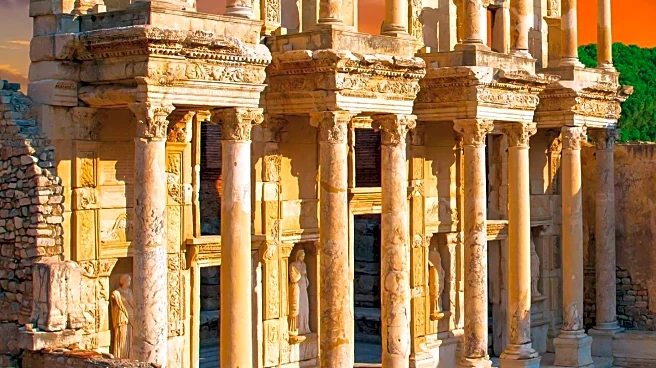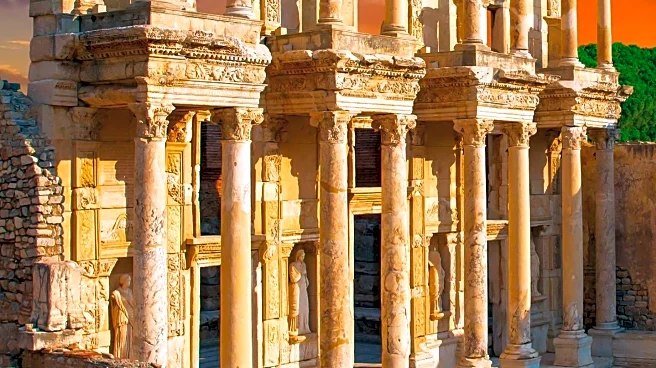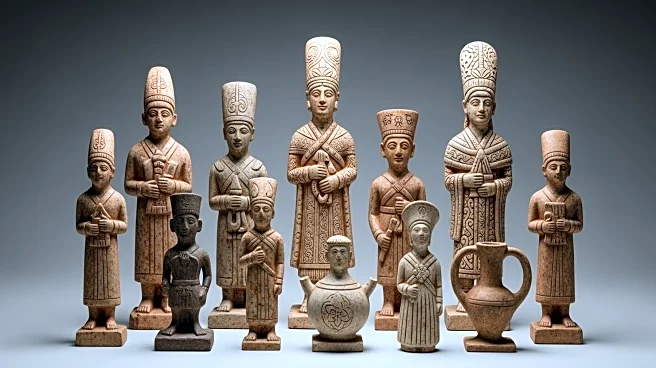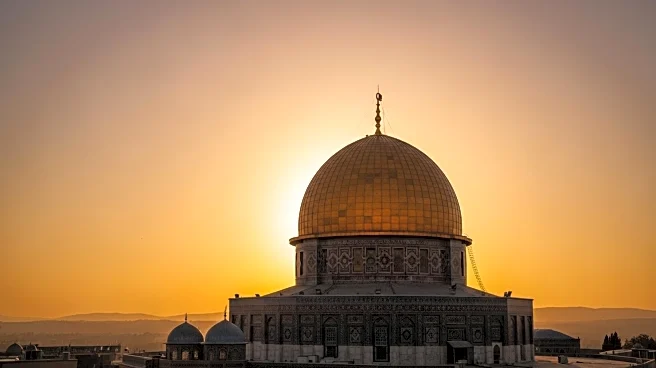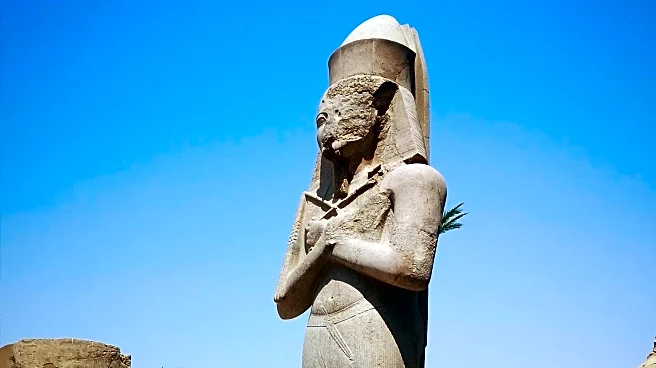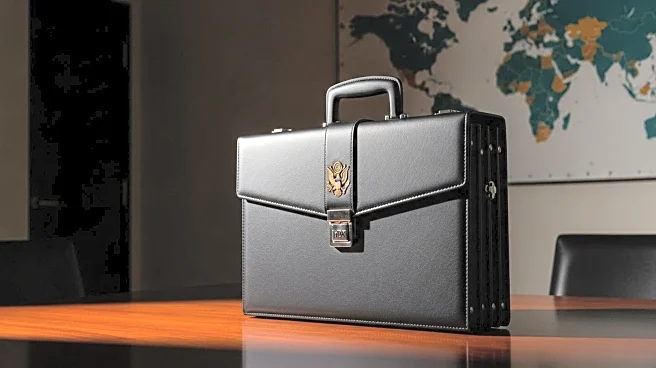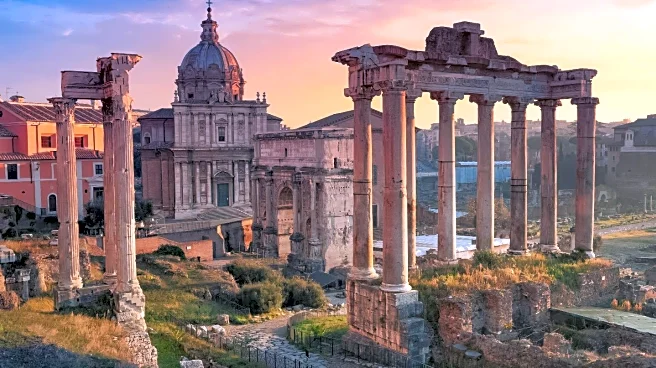What's Happening?
Turkey has launched a new exhibition showcasing ancient artifacts, including significant discoveries and repatriated items, as part of its Heritage for the Future project. The exhibition, held at a national library in Ankara, features 570 artifacts, many of which are displayed for the first time. This initiative is part of Turkey's strategy to position itself as a leader in archaeology, with the government investing approximately $150 million annually. The exhibition includes a headless statue of Roman Emperor Marcus Aurelius, repatriated from the Cleveland Museum of Art after a legal battle. The project aims to unearth, protect, and monetize Turkey's rich historical heritage.
Why It's Important?
The exhibition underscores Turkey's commitment to becoming a global leader in archaeology, both on land and underwater. By investing heavily in archaeological projects, Turkey is enhancing its cultural tourism appeal, potentially boosting its economy through increased visitor numbers. The repatriation of artifacts like the Marcus Aurelius statue sends a strong message about the importance of cultural heritage protection and the consequences of acquiring looted objects. This initiative also highlights the role of archaeology in understanding historical narratives and shaping future cultural policies.
What's Next?
Turkey plans to continue its archaeological efforts, with thousands of staff assigned to year-round excavations and the construction of visitor centers and museums. The government aims to increase the number of active excavations, further solidifying its position in the archaeological field. Critics have raised concerns about the impact of tourism on fragile sites and the potential depletion of artifacts for future study. However, Turkish officials believe that the current efforts are just the beginning, with many sites yet to be explored.
Beyond the Headlines
The exhibition raises ethical questions about the repatriation of cultural artifacts and the responsibilities of museums worldwide. It also highlights the potential for political influence over archaeological research priorities. The initiative may lead to long-term shifts in how countries manage and protect their cultural heritage, emphasizing the need for international cooperation in combating the trafficking of cultural property.
